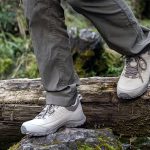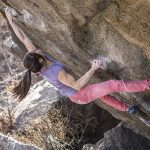The USDA Forest Service Southern Research Station (SRS) recently published a national study, Outdoor Recreation Trends and Futures, showing that Americans’ current choices for outdoor recreation differ noticeably from those made by previous generations of Americans.
“Our research shows that not only are more Americans participating in outdoor recreation, the number of times they participated in many of the outdoor activities surveyed has grown,” said author and lead researcher Ken Cordell, SRS pioneering scientist and one of the foremost authorities on recreational trends in the United States.
Cordell prepared the report as part of the 2010 Resources Planning Act (RPA) Assessment. The Forest and Rangeland RPA of 1974 mandates a periodic assessment of the conditions and trends of the nation’s renewable resources. Outdoor Recreation Trends and Futures provides an extensive and detailed overview of outdoor recreation participation, regional variation in participation, and differences in participation by demographic groups. The report emphasizes nature-based outdoor recreation and the natural amenities driving these activities.
“Trends in nature-based and other outdoor recreation have far-reaching implications, especially for how we manage public lands,” said Cordell. “This report offers the only public agency-sponsored long range forecasting of recreation demand for the United States.”
The study showed a discernible growth in nature-based activities -those defined as taking place in natural settings or involving directly some element of nature from 2000 to 2009. Among types of nature-based recreation, motorized off-road and snow activities grew until about 2005, but ended the decade at about the same level as 2000. The trend in hunting, fishing, and backcountry activities remained relatively flat and various forms of skiing, including snowboarding, declined during this period. The clear growth area was within the overall group of activities oriented towards viewing and photographing nature.
Generally, outdoor recreation activities are projected to grow in number of participants out to 2060. Population growth is projected to be the primary driver of growth in number of adult participants. The top five activities in terms of growth of number of participants are developed skiing, other skiing, challenge activities, equestrian activities, and motorized water activities. The lowest rates of participant growth are visiting primitive areas, motorized off-road activities, motorized snow activities, hunting, fishing, and floating water activities.
“Access for activities such as snow skiing, rock climbing, and horseback riding may rise in importance relative to other activities,” reads the report. “Access for off-road and snowmobile driving, hunting, and fishing may decline in relative importance.”
“The study shows that public lands continue to be highly important for the recreational opportunities they offer, with again, a growth in nature-based recreation, especially viewing, photographing, or otherwise appreciating nature,” said Cordell. “Continuous assessment and adaptions to the management of public lands is essential as changes emerge in the future. Orienting overnight and day-use sites on public lands to emphasize nature viewing, photography and study would seem to be an appropriate strategy.”
The report includes invited papers from a wide range of recreation and social scientists that add context to tables and figures by focusing on specific issues and perspectives on: trends in wildlife-related recreation; recreation patterns across demographic, region-of-country, and natural setting strata; youth time and activities outdoors, and recreational use of public and private properties.















